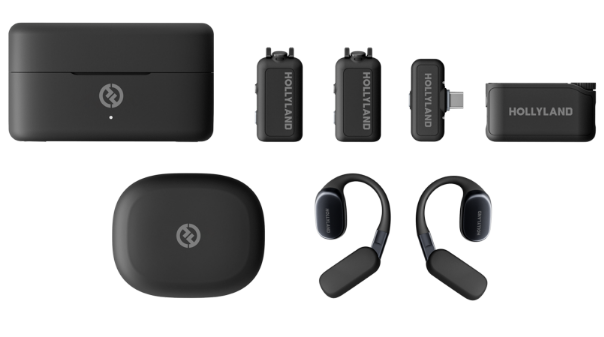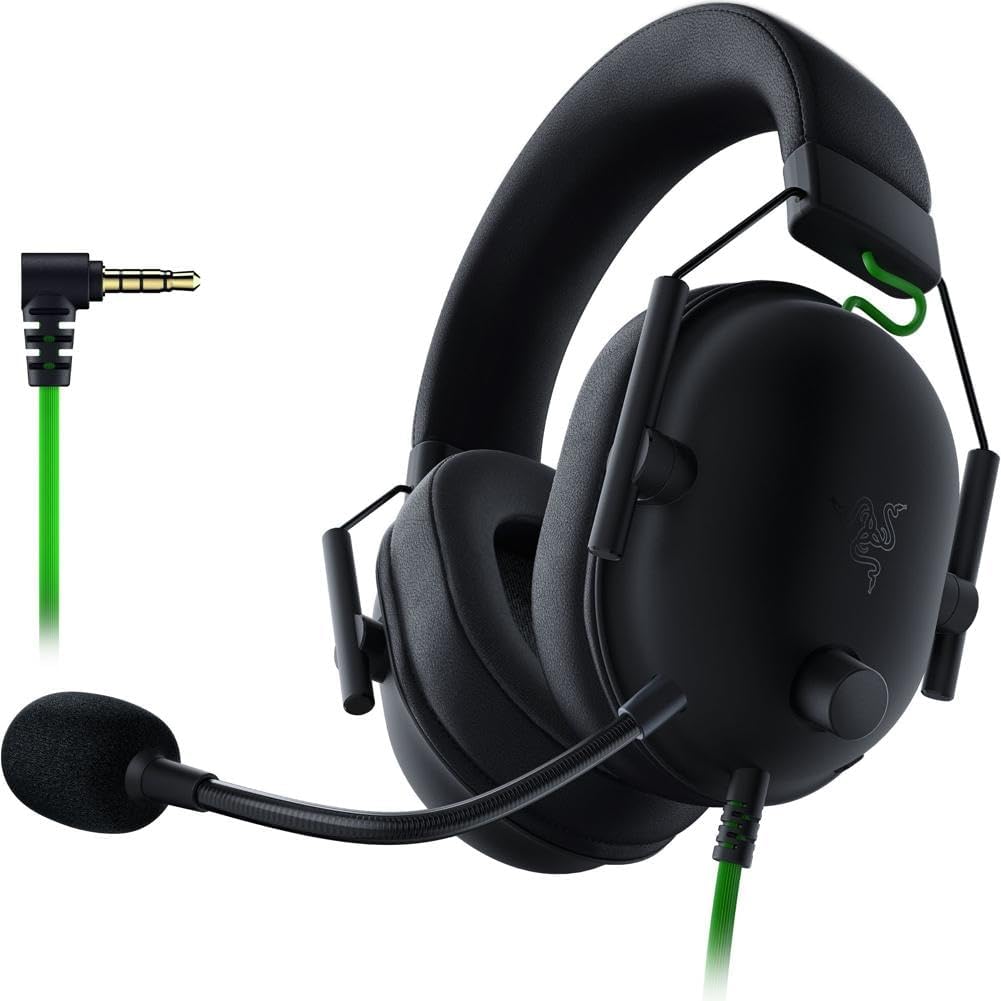Field recording captures the raw essence of any environment, weaving a tapestry of sound that breathes life into multimedia projects. To truly encapsulate the vibrant auditory scenes of bustling cityscapes or serene nature, the right equipment is paramount. A high-quality microphone can mean the difference between a recording that immerses your listeners in the moment and one that falls flat. For audiophiles, podcasters, and sound designers alike, finding the best microphone for field recording is essential. In this listicle, we’ll unveil top-tier microphones that not only stand up to the elements but also capture the world in its truest sonic form. Whether you’re a professional or a passionate enthusiast, let’s dive into the crystal-clear world of impeccable audio capture.
When selecting the best microphone for field recording, there are several key criteria to consider to ensure high-quality audio capture in various environments:
- Durability: Field microphones should be robust and weather-resistant to withstand different outdoor conditions.
- Portability: A good field microphone should be lightweight and compact for ease of transport during travel.
- Directionality: Depending on the recording focus, microphones can be omnidirectional, capturing sound from all sides, or directional (such as shotgun mics), which capture sound from one direction while reducing background noise.
- Sound Quality: High fidelity and a flat frequency response will yield the most accurate representation of the original sound.
- Sensitivity: The microphone should register quiet sounds without introducing too much self-noise (the electronic noise the microphone’s components make).
- Battery Life: For devices not powered by the recording gear, long-lasting battery life is imperative for extensive field sessions.
- Wind Noise Reduction: The ability to counteract or filter wind noise is essential to prevent recordings from being overwhelmed by the elements.
- Accessories: Availability of compatible accessories like windshields, shock mounts, and carrying cases can enhance recording quality and convenience.
Balancing these factors will help in identifying the best microphone for capturing high-quality audio in field recordings.
| Feature | Hollyland Lark M2 | Sennheiser MKH 416 | Rode NTG5 | Audio-Technica AT875R | Zoom H5 | Tascam DR-100mkIII |
|---|---|---|---|---|---|---|
| Price Range | $$$ (Mid-Range) | $$$$ (Professional) | $$$ (Mid-Range) | $$ (Budget-Friendly) | $$ (Budget-Friendly) | $$$ (Mid-Range) |
| Pickup Pattern | Omnidirectional | Supercardioid/Lobar (Focused) | Supercardioid (Focused) | Line + Gradient (Focused) | Interchangeable (Versatile) | Omni, Cardioid (Selectable) |
| Frequency Response | 20Hz – 20kHz | 40Hz – 20kHz | 20Hz – 20kHz | 90Hz – 20kHz | Depends on Mic Capsule Used | 20Hz – 40kHz |
| Power Requirements | Rechargeable battery | Phantom power (48V) | Phantom power (48V) | Phantom power (11-52V) | AA batteries or USB power | Built-in rechargeable battery |
| Notable Features | ENC, LDS antenna, and 1000ft wireless coverage | Moisture resistant, rugged design | Lightweight, moisture resistant | Good for tight pickup areas | Modular mic system, portable | High-quality recording, dual battery system |
Please note the price categories as “$$”, “$$$”, and “$$$$” are relative and can change over time, so it’s best to check current prices from various sellers.
To wrap this up with some simple advice:
- If you need a professional and highly directional mic that can pick up sounds from a distance and withstand tough conditions, consider the Sennheiser MKH 416 or the Rode NTG5.
- For those on a budget who still need focused sound pick-up, the Audio-Technica AT875R could be a good choice.
- If you want versatility and the option to change microphones according to the situation, the Zoom H5 is useful with its interchangeable microphone system.
- For those who not only want to capture audio but also record it directly into a high-quality device without needing an extra audio recorder, the Tascam DR-100mkIII offers an all-in-one solution.
Remember to check out product reviews, warranty, and after-sales support as part of your decision-making process.
Hollyland Lark M2
Meet the top opponent with peerless competition when it comes to field recording. For several reasons, the Hollyland Lark M2 proves its mettle to be the top choice for long outdoor sessions. The first and foremost is the wireless range. Lark M2 can be your audio-capturing companion for up to 1,000ft. This wide range makes this wireless mic ideal for capturing clean audio in open environments where long-distance sound recordings are usually necessary.
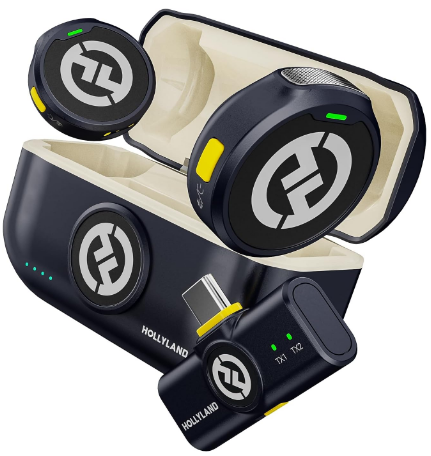

Hollyland LARK M2 - Mini Lavalier Microphone
An incredibly lightweight and compact wireless button microphone that captures high-fidelity audio.
Key Features: 9g Button Size | 48 kHz/24-bit | 40 Hours Battery
Among many of the Hollyland Lark M2’s key traits, the Laser Direct Structuring (LDS) antenna design is highly important. The LDS technology in this mic ensures stable transmission even when many humans surround the place. To understand this point, imagine you are recording a wildlife video in a murky forest where standard microphones might be unable to capture sound due to signal interface due to woods and trees or your human/animal movements. In such cases, the LDS antenna ensures a stable connection for uninterrupted recording.
Moreover, wearing the Hollyland Lark M2 is easy and fun. This wireless field microphone offers multiple options for attachment, including clips, magnets, and a necklace. This flexibility eases the recording process, permitting you to focus on capturing flawless audio without worrying about loose equipment on your clothing.
What’s more to know? Well, this microphone includes the Environmental Noise Cancellation (ENC) technology that reduces noise over a variety of audio frequencies, so your voice remains clear and original. Besides, Lark M2’s battery life makes it more appealing for field recording. The mic can work for up to 10 hours on a single charge. When used with a fully charged case, Lark M2 can be good for up to 40 hours.
Specs:
- SPL: 115 dB
- Sample Rate: 48 kHz
- Bit Depth: 24-bit
- Polar Pattern: Omnidirectional
- Frequency Response: 20 Hz – 20 kHz
- Charging Time (all versions): Up to 1.5 hours
- Wireless Transmission Technology: 2.4GHz AFH
- TX Operating Time: 10 hours (9 hours for camera version)
- Wireless Range (Mobile Version): 1000ft LOS and 200ft NLOS
- Wireless Range (Camera Version): 1000ft LOS and 130ft NLOS
Pros:
- Talk of the town battery life
- The mics require no effort for the setup
- Despite its tiny size, this wireless microphone has a good sound quality, making the kit suitable for professional field recording audiovisual projects
Cons:
- Some users complain that the dongle design blocks other ports on the recording device, such as the USB port on the laptop
Price:
Hollyland Lark M2 is available in different versions, including Camera 3.5mm TRS, Lightning, USB Type-C, and Combo. Therefore, the prices are distinct for each variant. However, for an idea, the cost of Lark M2 ranges from $139 to $178, as seen on Amazon US.
Practically speaking, the best mic for field monitoring is the one that has a wide range and extended battery life. Fortunately, the Hollyland Lark M2 has all these qualities along with advanced features, which are not found in other brands discussed here.
Sennheiser MKH 416 Shotgun Microphone
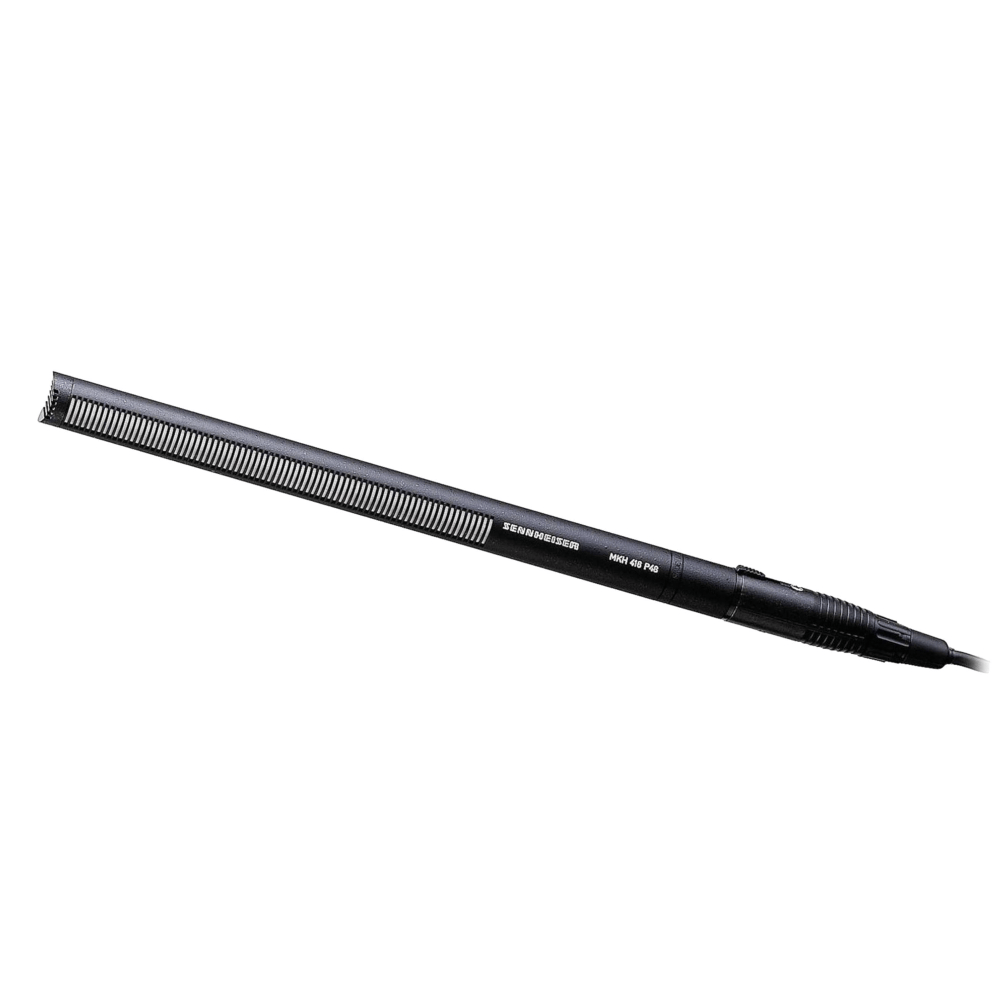
The Sennheiser MKH 416 is a compact pressure-gradient microphone with a short interference tube, well-known for its excellent directivity and compact design. Trusted by professionals in the field, this microphone is a staple for filmmakers, documentarians, and field recording experts for its reliability in various environmental conditions.
Overview:
The MKH 416 is my go-to microphone when I need something that can handle the demanding conditions of outdoor recording. It’s a testament to German engineering with its rugged build and superior sound quality. Whether I’m capturing the sounds of nature or recording on a bustling film set, the MKH 416 delivers crisp, clear audio with minimal noise.
The mic’s supercardioid/lobar pattern is perfect for targeting specific sound sources while rejecting off-axis noise. I’ve found this incredibly useful when trying to isolate dialogue from background sounds or honing in on a particular animal call in nature documentaries. Plus, it’s nearly immune to climate-related distortions, which is a massive relief when working in humidity or temperature extremes.
Specs:
- Polar Pattern: Supercardioid/Lobar
- Frequency Response: 40Hz to 20kHz
- Low-Cut Filter: Switchable
- Sensitivity: 25 mV/Pa
- Maximum SPL: 130 dB
- Signal to Noise Ratio: 81 dB
- Power: 48V Phantom power required
Pros:
- Exceptional sound quality with clear, natural sound capture.
- Excellent directionality helps to focus on the subject and isolate ambient noise.
- Robust and weather-resistant design; it’s never let me down in the field.
- Versatile for a vast range of applications from film to wildlife recording.
Cons:
- It’s on the pricier side, making it an investment for professionals.
- Requires phantom power, which is not a con per se, but something to plan for regarding equipment and battery life.
- It might be overkill for hobbyists or those just starting in field recording.
Price:
The Sennheiser MKH 416 is definitely a premium offering, typically priced around $1,000. While this may cause sticker shock for some, in my opinion, the investment is completely justified for the serious professional who values durability and impeccable sound quality.
In conclusion, the Sennheiser MKH 416 is not just a microphone; it’s an essential tool in the arsenal of a field recording professional. Its ability to deliver exceptional audio quality, its robustness against the elements, and its focused pickup pattern make it a top-tier microphone for serious users who are willing to invest in their craft.
Rode NTG5 Location Recording Microphone Kit
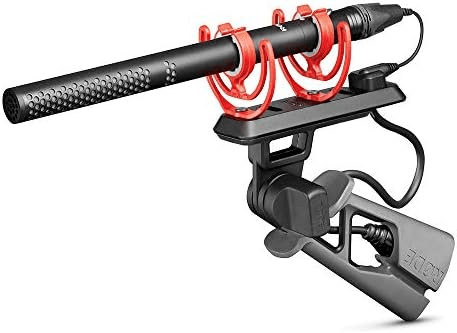
Overview
The Rode NTG5 is a remarkable feat in the realm of field recording microphones. Right off the bat, you can tell this microphone is crafted with the on-the-go recording professional in mind. Its design is compelling; it’s compact and lightweight, making it a constant pleasure to use in the field where every ounce of gear weight counts.
Upon using the NTG5, I was immediately impressed by its clarity and natural sound. The tonal quality it offers is superb for a microphone in its class. Whether I was hustling to capture dialogues in a windswept environment or recording the subtle nuances of nature, the NTG5 delivered consistently impressive performance. It’s evident that Rode has invested considerable expertise in developing this microphone to excel in a variety of outdoor recording scenarios.
The kit itself is generous, providing not just the microphone but a host of accessories that make it a ready-to-go solution. The inclusion of the PG2-R Pistol Grip and the WS10 Windshield highlights Rode’s understanding that wind noise is a field recorder’s nemesis, and I found that these accessories do a great job of minimizing unwanted noise.
Specs
The Rode NTG5 stands out not just for its sonic qualities but its technical specs as well. It’s constructed with RF-bias technology, which offers immunity to the RF interference that plagues some locations. Additionally, its low self-noise is a boon when trying to capture the most delicate sounds. The frequency range is broad and allows for capturing a rich variety of tones, and its highly directional supercardioid polar pattern makes it easy to target the sounds you want to capture while naturally attenuating others.
Pros:
- Exceptional sound clarity and natural tonal balance
- Compact and lightweight design, ideal for field use
- RF-bias technology greatly reduces interference
- Excellent accessories included for immediate field use
- Durable build that reassures in challenging environments
Cons:
- May be slightly pricier than basic models, but justified by quality
- Requires an additional recorder or camera with XLR input, which is not a con per se, but something to be aware of for complete newbies
Price
As for the price, what strikes me is the value offered here. Sitting at a mid-range price point (prices may fluctuate, so it’s best to check current listings), the Rode NTG5 is certainly not the cheapest option available, but for the discerning professional or the serious hobbyist, it represents a wise investment. The performance and build quality tell a story of a product that’s built to last and serve faithfully on countless recording expeditions.
In essence, the Rode NTG5 isn’t just another microphone; it’s a trusted companion for the sonic storyteller, a toolkit in itself for the painter of auditory landscapes. It’s a microphone that doesn’t just hear, but listens—ensuring that the stories you wish to tell through sound are captured with the depth and detail they deserve.
Audio-Technica AT875R Line/Gradient Shotgun Microphone
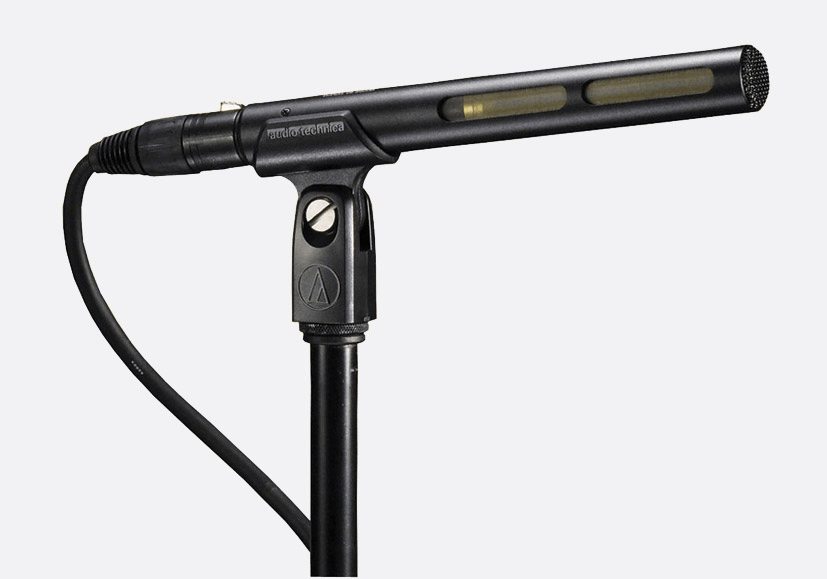
The Audio-Technica AT875R represents a practical and effective solution for field recording enthusiasts who are in pursuit of crisp, directional audio without the weight and bulk typically associated with high-performance shotgun mics. In my hands-on experience, this microphone truly shines when you’re on the move, delivering clear sound even amidst ambient noise. Its concise form factor allows for seamless integration with a variety of camera setups, and it performs admirably in outdoor scenarios, capturing the essence of natural soundscapes or dialogue with remarkable precision.
Specs:
- Polar Pattern: Line + gradient
- Frequency Response: 90Hz to 20kHz
- Output Connector: 3-pin XLRM-type
- Signal to Noise Ratio: 74 dB
- Weight: 80 g (2.8 oz)
- Length: 175.0 mm (6.89″)
Pros:
- Lightweight and compact, which is extremely beneficial for field recordists who are often on the go.
- Delivers a focused pickup pattern, reducing the capture of side and rear sounds, and enhancing the clarity of audio from the subject.
- Offers robust construction that’s meant to withstand the rigors of travel and outdoor use.
Cons:
- While it provides a competitive frequency response, its performance in the lower frequencies isn’t as rich compared to some higher-end models.
- It requires phantom power, which is not an issue for professional gear but could be a point of consideration for those using entry-level cameras without such support.
Price:
The Audio-Technica AT875R is reasonably priced, typically found between $170 to $200. This pricepoint positions it as a budget-conscious choice that doesn’t skimp on delivering professional-quality audio for field recording.
Note: Prices vary, and it’s always worth checking multiple retailers for the best deal or any potential sales that might apply.
Zoom H5 Handy Recorder with Interchangeable Microphone System
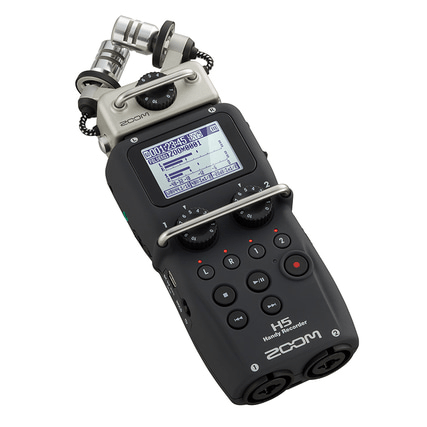
Overview:
Having used the Zoom H5 Handy Recorder for various recording tasks, I can attest to its reliability and performance. The device feels sturdy in hand, thanks to its rubberized body which not only provides a secure grip but also adds a layer of protection against knocks and bumps. The bright backlit LCD screen is a significant advantage for visibility in different lighting conditions.
The preamps are impressively quiet, which is crucial when recording delicate acoustic instruments or ambiance sounds. The inclusion of the XY stereo microphone capsule provides a great starting point for high-quality stereo recording, but the ability to swap out capsules with other Zoom models like the shotgun mic or additional XLR/TRS inputs is a game-changer, offering a level of flexibility rarely seen in portable recorders.
Navigating the menu system is straightforward, and the physical gain dials for each channel allow for quick, tactile adjustments, which is a huge plus during field recording when conditions can change rapidly. The H5 also doubles as a USB audio interface, which I’ve found particularly useful for recording directly into DAW software on my computer.
Specs:
- Interchangeable input capsules
- Dual XLR/TRS combo inputs
- Up to 24-bit/96kHz audio in BWF-compliant WAV or a variety of MP3 formats
- Two mic/line inputs with XLR/TRS combo connectors, each with selectable phantom power and -20dB pad
- Analog-style gain controls for each input
- Protective “roll-bar” type covers prevent accidental movement of gain controls
- Large backlit LCD display
- Multitrack to SD, SDHC, or SDXC cards up to 128GB
- Built-in effects, including low-cut filtering, compression, and limiting
- Chromatic tuner and metronome
- Auto-record, Pre-record, and Backup-record functions
- MS decoding
- Multichannel and stereo USB audio interface for PC/Mac/iPad with Loop Back function
- Powered by two AA batteries or USB
Pros:
- Excellent audio quality with low noise floor
- Interchangeable microphone capsules offer versatility
- Sturdy, ergonomic design that’s built to last
- Physical gain controls for precise input level adjustment
- Can be used as a USB audio interface
Cons:
- Battery life can be limited depending on usage; carrying spare batteries or an external power source is recommended
- The menu system, while straightforward, can feel a bit dated compared to touchscreen interfaces
- The plastic material of the X/Y capsule can feel less durable than the rest of the unit
- Some may find the device slightly bulky for pocket portability
Price:
As of my knowledge cutoff in early 2023, the Zoom H5 Handy Recorder typically retails for around $280 to $300 USD. Prices may vary based on the retailer, location, and any ongoing promotions or sales. It’s a mid-range price point for portable recorders, offering a good balance between cost and features for professionals and serious hobbyists.
Tascam DR-100mkIII Linear PCM Recorder
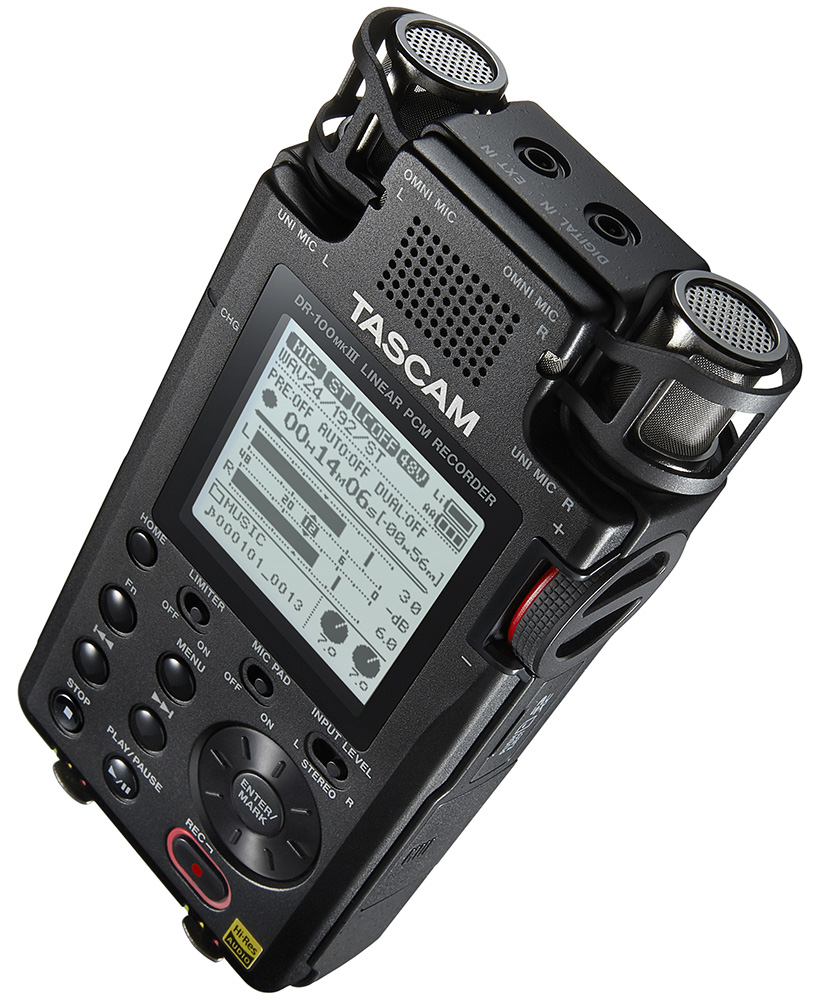
The Tascam DR-100mkIII is a portable recording powerhouse, combining robust build quality with exceptional audio performance. This is the recorder you take to the field when you want to capture every nuance of sound without being tethered to a larger system. Unlike the typical shotgun mics and handheld recorders that are common in field recording, the DR-100mkIII is a standalone unit that impresses with its versatility and ease of use.
One of the first things I appreciated about this recorder was its dual battery system, ensuring I didn’t run out of juice in the middle of a critical session. The user interface may not win any design awards, but its practical layout means you’re never fumbling for the right button. What truly sets this device apart, however, is its ability to record in pristine 192kHz/24-bit audio – this recorder does justice to environments rich in sonic detail.
Specs
- Dual AKM AK4558 converters for high S/N ratio
- Dual battery system (built-in rechargeable and AA)
- Two sets of microphones (omnidirectional and directional)
- XLR/TRS combo inputs with Phantom power
- Supports high-resolution audio up to 192kHz/24-bit
- Locking connectors to prevent accidental unplugging
Pros:
- The high-resolution recording capabilities truly elevate the capturing of ambient sound and delicate aural textures.
- I appreciate the dual battery system, which is a lifesaver during extended recording sessions where power sources are scarce.
- The dual microphone setup is quite the treat – switching from an intimate omni capture to a more focused directional pattern without additional mics is fantastic.
Cons:
- It might be somewhat bulky for those accustomed to ultra-compact recorders, but this is a minor quibble given its capabilities.
- While the interface is straightforward, it lacks a bit of the intuitiveness and modern touch that other recorders offer, which could be a slight hindrance for new users
Price
The Tascam DR-100mkIII retails around $399, which, in my opinion, is a fair price for a recorder of this caliber. It might be on the higher end for casual users, but for professionals seeking reliability and high-fidelity recordings in the field, it’s an investment worth making.
Opinion: The Tascam DR-100mkIII is not for those casually dabbling in sound recording; it’s for the dedicated audiophile who cherishes depth and clarity in their audio captures. It takes its job seriously, and in a domain where precision matters, this recorder does not disappoint. A solid piece of kit for any sound professional’s arsenal.
Conclusion
Finding the perfect microphone for field recording is a journey worth taking for any audio enthusiast or professional. With various options on the market, it’s essential to consider factors like portability, durability, audio quality, and power options. Whether you’re capturing the subtle inflections of nature or the vibrant sounds of a bustling city, the right microphone can elevate your recordings from good to exceptional. Remember to select one that complements your style and meets the demands of your recording environment. Happy recording!
FAQs
Q: What should I consider when choosing a microphone for field recording?
A: Key factors include the microphone’s pickup pattern, sensitivity, frequency response, size, weight, power requirements, and whether it’s designed to withstand environmental conditions you’ll encounter during field recording.
Q: Can I use a studio microphone for field recording?
A: While studio microphones can capture high-quality audio, they typically aren’t designed for the rigors of field recording. Field microphones are often more robust and adapted to different weather and handling conditions.
Q: How do I protect my field recording microphone from the elements?
A: Many field microphones come with windshields and protective cases. Additionally, you can invest in specialized blimps and furry windjammers to minimize wind noise and protect the mic from harsh weather conditions.


































.png)


